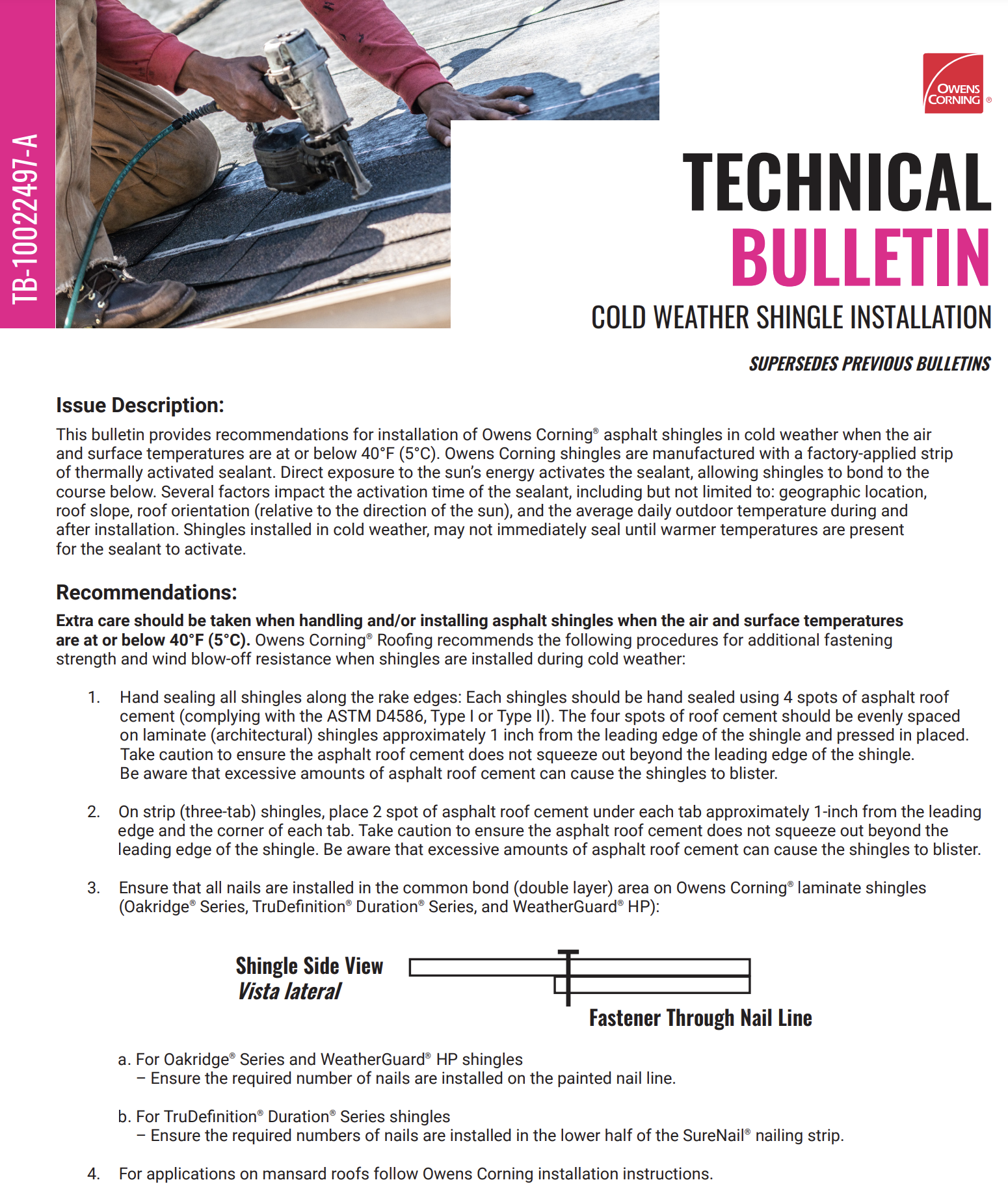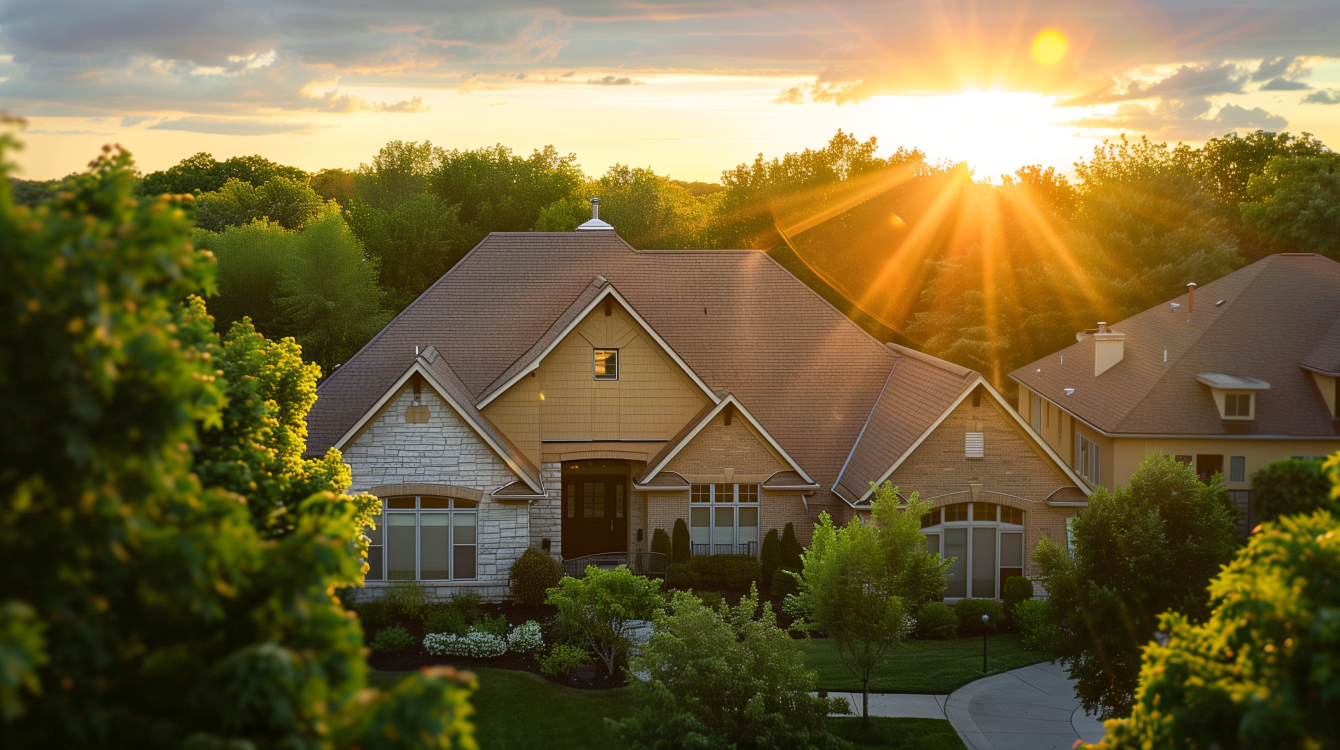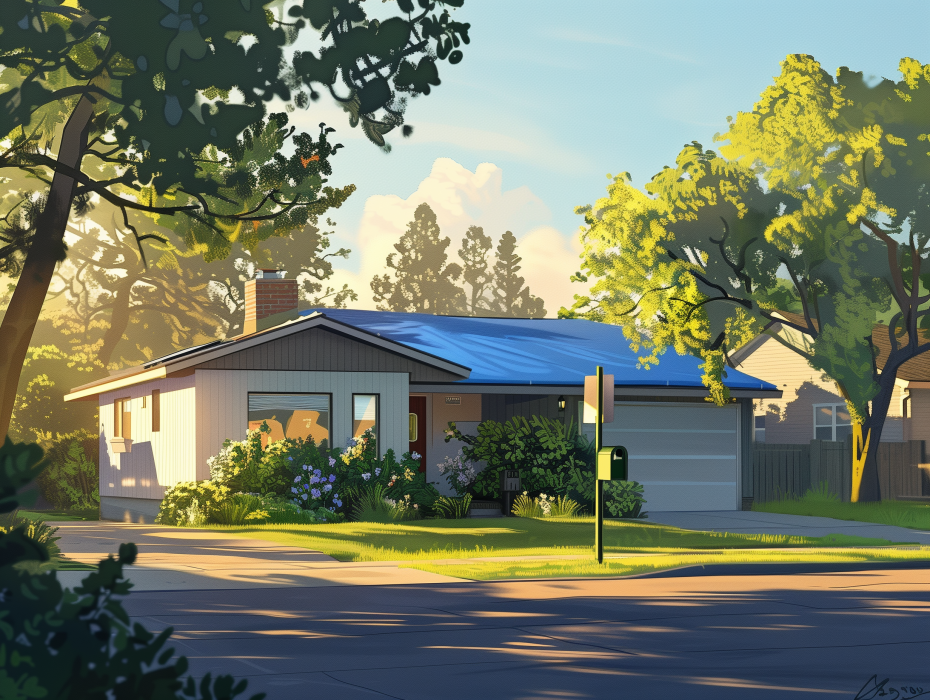Understanding Cold Weather Shingle Installation
Installing asphalt shingles in cold weather presents unique challenges. Owens Corning® shingles come with a factory-applied thermally activated sealant that requires direct exposure to the sun’s energy to bond properly. When the air and surface temperatures are at or below 40°F (5°C), this sealant may not activate immediately, affecting the shingles’ ability to adhere properly.
Key Factors Affecting Sealant Activation
- Geographic Location:
- Different regions receive varying amounts of sunlight, impacting sealant activation time.
- Roof Slope and Orientation:
- The angle and direction of the roof relative to the sun can influence how quickly the sealant activates.
- Temperature:
- Consistently cold temperatures delay the activation of the sealant.
Recommendations for Cold Weather Shingle Installation
- Extra Care in Handling and Installation:
- Shingles are more brittle in cold weather, so handle them with care to prevent cracking.
- Hand Sealing for Additional Fastening Strength:
- Laminate (Architectural) Shingles:
- Hand seal all shingles along the rake edges using four evenly spaced spots of asphalt roof cement (ASTM D4586, Type I or II), approximately 1 inch from the leading edge.
- Avoid excess roof cement to prevent blistering.
- Strip (Three-Tab) Shingles:
- Place two spots of asphalt roof cement under each tab, about 1 inch from the leading edge and corners.
- Ensure the cement does not squeeze out beyond the shingle edges to avoid blistering.
- Laminate (Architectural) Shingles:
- Proper Nailing Technique:
- Ensure all nails are placed in the common bond (double layer) area for added stability.
- Oakridge® Series and WeatherGuard® HP Shingles:
- Install the required number of nails on the painted nail line.
- TruDefinition® Duration® Series Shingles:
- Install the required number of nails in the lower half of the SureNail® nailing strip.
- Special Instructions for Mansard Roofs:
- Follow Owens Corning’s specific installation instructions for mansard roofs to ensure proper application.
Additional Tips for Cold Weather Installation
- Monitor Weather Conditions:
- Plan installations during periods of anticipated warmer temperatures when possible.
- Store Shingles Properly:
- Keep shingles in a warm, dry place until installation to minimize brittleness.
- Use Quality Materials:
- Ensure the use of high-quality asphalt roof cement and nails for better adherence and longevity.
Conclusion
Installing asphalt shingles in cold weather requires careful planning and adherence to recommended practices to ensure proper sealing and longevity. By following these guidelines, you can maintain the integrity and appearance of your roof even in challenging weather conditions.
For Immediate Service or Consultation
Contact Allied Emergency Services, INC.
Phone: 1-800-792-0212
Email: Info@AlliedEmergencyServices.com
Location: Serving Illinois, Wisconsin, and Indiana with a focus on the greater Chicago area.
If you require immediate assistance or have specific questions, our human support is readily available to help you.
Disclaimer: This article is intended for informational purposes only. For professional advice, consult experts in the field.









